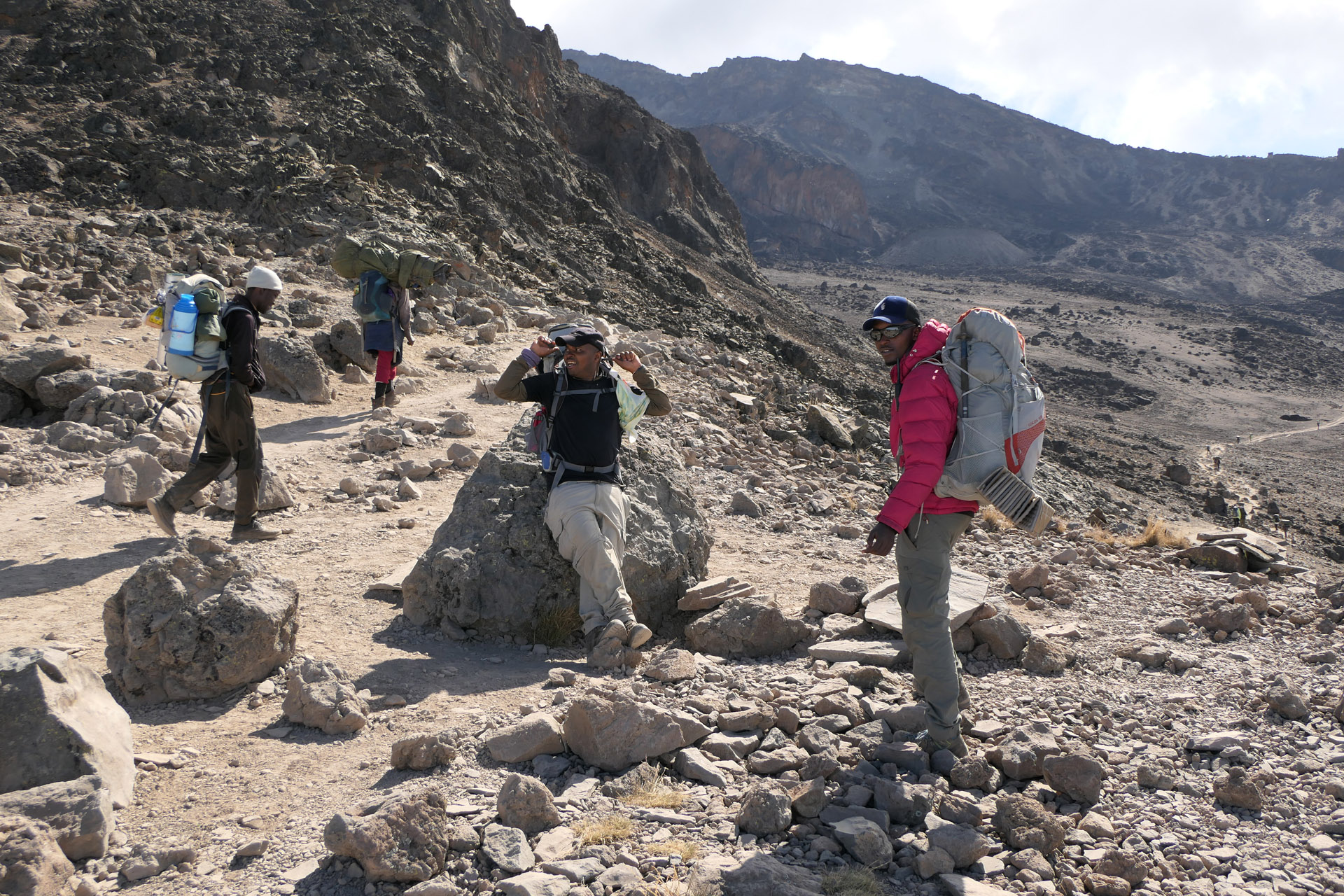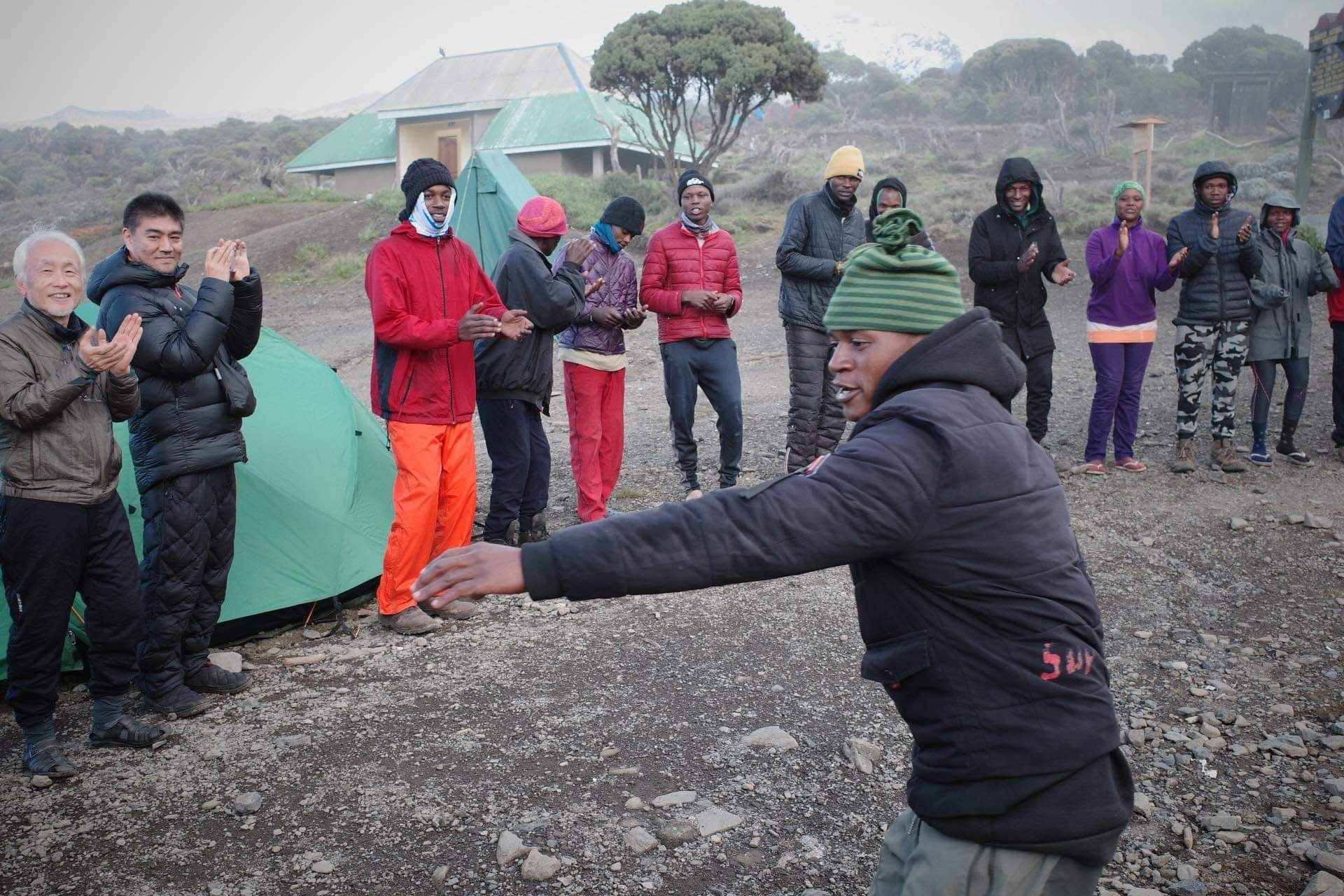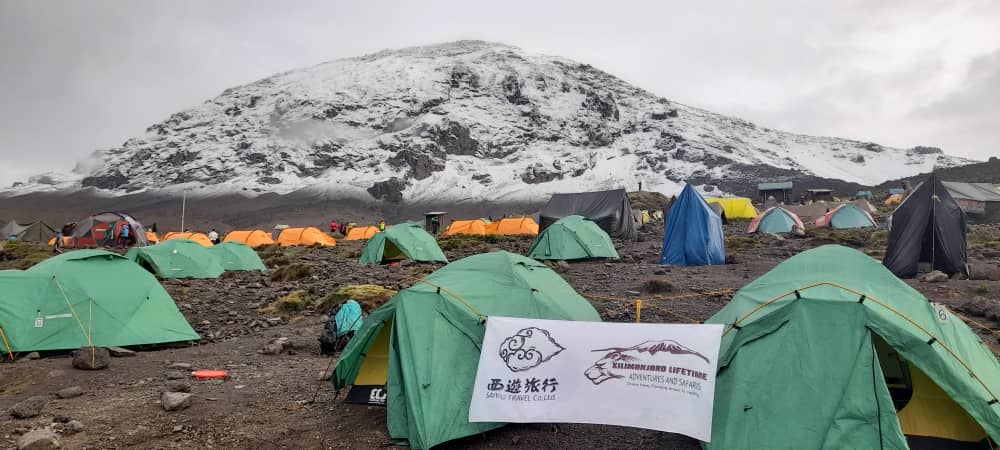How long does it take to hike Kilimanjaro to the summit
Around 25% of novice climbers fall short of reaching the Kilimanjaro summit, often due to opting for shorter expeditions that don’t allow for adequate acclimatization. Kilimanjaro Lifetime Adventures has been orchestrating Kilimanjaro adventures catering to both beginners and seasoned climbers, understanding the optimal trip duration for various skill levels. In this article, we’ll delve into the decision between shorter five or six-day treks versus longer journeys.
Summary: Climbing Kilimanjaro can take five to nine days, depending on the route. If you opt for expeditions that include crater camping, the journey might extend to ten days. The most recommended routes for beginners span seven days. Shorter variations lasting 5 or 6 days are better suited for experienced hikers who have acclimatized beforehand.
Among the Seven Summits, the highest peaks on each of the seven continents, Kilimanjaro is one of the least time-consuming. For comparison, climbing Denali and Aconcagua requires at least 18 days. Expeditions to Everest can take about two months. And Puncak Jaya usually needs 10-11 days. In contrast, you can climb Mt Kilimanjaro in only about a week.
What’s the shortest time to climb Kilimanjaro?
The minimum duration for climbing Mount Kilimanjaro is determined by the Kilimanjaro National Park Authority. Currently, this is set at 5 days for the Marangu and Rongai routes and six days for all other Kilimanjaro routes.
It doesn’t imply that climbing Kilimanjaro in a shorter time is impossible, but rather that climbers must pay park fees for at least this minimum duration. These fees make up almost half of the total package cost. For example, on a 5-day Marangu route, the park fees amount to $800 per person. Even if a climber with excellent fitness and acclimatization finishes the climb in fewer than six days, there is no reduction in these fees.
The durations set by the park authority consider the distance an average hiker can comfortably cover between two camps daily while getting reasonable acclimatization.
Longer routes provide better acclimatization
Beginners should not consider shorter itineraries to climb Mount Kilimanjaro. Years of industry practice revealed that the climbers need more days to acclimate successfully. Typically, an average hiker without previous hiking experience in the mountains requires seven days for this trip to acclimate successfully.
Note: In this article, the numbers for the duration of the Kilimanjaro trek include two days for descent, not counted towards acclimatization. For example, in a seven-day trek, hikers’ summit on the night of the fifth day. Then they spend the sixth day descending and exit the park on the seventh. So, there are only five days spent for acclimatization.
What is acclimatization?
Uhuru Peak, the summit of Kilimanjaro, stands at 5,895 meters/19,340 feet. At this height, the atmospheric pressure is only approximately 40% of what it is at sea level. At the summit of Kilimanjaro, with the air being almost twice as thin, it can feel akin to breathing through a narrow straw. You might struggle to take in enough oxygen as if you’re constantly short of breath.
If a climber were hypothetically transported directly to the top of Kilimanjaro by helicopter, they would likely experience acute mountain sickness (altitude sickness) within 1-2 hours. This condition can rapidly progress to cerebral or pulmonary edema, both of which are potentially fatal. The body needs time to adapt to the decreased oxygen to avoid these serious health risks.
To ensure your body gently adjusts to the high altitude, time is essential. For most of the hikers, a 7–8-day itinerary is ideal for climbing Kilimanjaro while avoiding altitude sickness.
Over this time, several physiological changes occur to cope with decreased oxygen levels.
- The breathing rate increases, even at rest, to take in enough oxygen molecules.
- The heart rate also rises to pump more oxygen-rich blood throughout the body.
- The production of red blood cells increases, enhancing the capacity to transport oxygen to the body’s vitals.
- The blood vessels in the brain dilate to improve blood flow and oxygen delivery.
These adaptations help the body function more efficiently in environments with lower atmospheric pressure, like at high altitudes on a Mount Kilimanjaro hike.
Who should choose a 5–6-day Kilimanjaro climb?
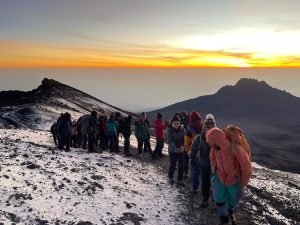 Shorter 5–6-day treks on Kilimanjaro can be appropriate for experienced trekkers who have been active in other high-altitude environments within six months before attempting to climb Kilimanjaro. Their recent experience in similar conditions means they are already acclimatized to high altitudes. If you’ve hiked to an altitude of over 5,000 meters (16500 feet) within two weeks prior to your Kilimanjaro trip, your recent acclimatization will significantly benefit and likely suffice for a 6-day Kilimanjaro itinerary.
Shorter 5–6-day treks on Kilimanjaro can be appropriate for experienced trekkers who have been active in other high-altitude environments within six months before attempting to climb Kilimanjaro. Their recent experience in similar conditions means they are already acclimatized to high altitudes. If you’ve hiked to an altitude of over 5,000 meters (16500 feet) within two weeks prior to your Kilimanjaro trip, your recent acclimatization will significantly benefit and likely suffice for a 6-day Kilimanjaro itinerary.
Shorter programs are more physically demanding. One will need to cover large distances each day. These condensed itineraries typically skip one of the camps along the trail, creating a more demanding schedule, especially for those of average fitness levels.
Take, for example, the six-day Machame route. On this itinerary, a hiker would start in the morning from Barranco Camp and trek directly to Barafu summit camp, covering a challenging distance of approximately 11 kilometers (7 miles). The physical exertion doesn’t end there. On the same night, after only 3-4 hours of rest, the hiker embarks on the summit attempt, followed by a descent to Millennium Camp. It means undertaking another 15 kilometers (9 miles). In total, within less than 30 hours, the hiker completes a 27-kilometer (17 miles) journey with minimal sleep, gaining over 2,000 meters (6,562 feet) in elevation.
While feasible for fit and experienced hikers, this compact Kilimanjaro climb schedule can be extremely taxing for those with average fitness.
Is it possible to climb Kilimanjaro even faster?
At Kilimanjaro Lifetime Adventures, some hikers occasionally complete these six-day treks in four or five days. However, these cases are exceptional. For most people, especially those new to high-altitude trekking, opting for a longer itinerary is safer and more advisable.
Who should choose a seven-day climbing Kilimanjaro itinerary?
Most Kilimanjaro beginner climbers should consider the longer trip options. When referring to “average” or “beginner” hikers, we’re talking about travelers who occasionally hike in the countryside and can walk up to 10-15 kilometers (6-9 miles) a day but haven’t experienced mountains as high as Kilimanjaro. For this category, seven-day itineraries to climb Kilimanjaro are the most suitable. These itineraries offer a balance of smooth acclimatization and a moderate physical challenge, with manageable distances between camps.
Using the mentioned Machame Route as an example, the seven-day trek adds a night at Karanga Camp between Barranco and Barafu summit camp. This extra night allows for a full night’s rest before attempting the summit night hike. Rather than covering 27 kilometers (17 miles) in under 30 hours towards the end, the seven-day trek spreads 21 kilometers (13 miles) over about 15 hours, making it easier for average fitness-level hikers.
Kilimanjaro climb duration and success rate
Elly (the CEO and founder of Kilimanjaro Lifetime Adventures) has gathered data from hundreds of our Kilimanjaro climb expeditions. One clear conclusion that has emerged from it is that seven-day hikes to Mount Kilimanjaro summit have a notably higher success rate than shorter itineraries. These longer treks consistently result in a more pleasant and enjoyable experience.
Who should consider eight-day or longer hikes?
Certain categories of climbers may need more than seven days for the trip. Those might include:
- Senior hikers, who may need more time for acclimatization.
- Those who haven’t hiked before at all.
- Travelers climbing Kilimanjaro with children aged 10-15.
- Hikers who have been on high mountains before and discovered that they need more time for acclimatization than usual.
Some travelers simply wish to spend more days on Kilimanjaro than the typical itinerary offers. The KINAPA permits extended stays on all routes except Marangu (“Coca-Cola route”). It’s important to remember that choosing to extend your trek will result in additional costs. This includes extra park fees, along with the need to cover increased expenses for mountain crew wages, meals, taxes, and other expedition-related costs.
Which itineraries should Kilimanjaro climbing beginners avoid?
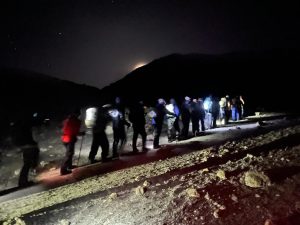 Many tour operators promote the Marangu 5-day and Machame 6-day treks as recommended options to climb Kilimanjaro. It is because these routes are the cheapest to organize, making them easier to sell.
Many tour operators promote the Marangu 5-day and Machame 6-day treks as recommended options to climb Kilimanjaro. It is because these routes are the cheapest to organize, making them easier to sell.
However, these shorter options are challenging for average hikers. Both itineraries omit a crucial acclimatization day in the middle of the journey, essential for adjusting to high altitudes. As a result, these treks typically have the lowest summit success rates and can be risky for beginners due to insufficient acclimatization time.
Behind these trips are often smaller local tour operators. Many of them have substandard safety practices and amateur guides. When poor acclimatization is combined with these factors, these routes are less safe, especially for those new to high-altitude trekking. Risks include altitude sickness, bad equipment, meals, and lack of professional guidance – the list can go on.
Avoid the Marangu 5-day and Machame 6-day treks. At Kilimanjaro Lifetime Adventures, we arrange them only as private Kilimanjaro expeditions for experienced hikers accustomed to high-altitude environments who understand the risks involved.
Choosing a shorter itinerary on Kilimanjaro to save costs can be tempting, but this approach often backfires. It significantly reduces the chances to successfully summit and can lead to severe altitude sickness. Especially if you opt for the super budget operators. This may necessitate potential evacuation and medical treatment, which can be costly in the long run.
What are Kilimanjaro crater experience and how long do they take?
Every year, fewer than a hundred climbers choose the Kilimanjaro crater camping expedition. After summiting, they don’t descend but camp in the crater at about 5,750 meters (18,865 feet). These expeditions last over ten days and are more demanding than usual treks, where the hikers spend only several hours above 5,700 meters (18,865 feet).
Camping in the Kilimanjaro crater is a unique experience. However, these trips are also more expensive. The park authority charges special fees for camping there. Additionally, unlike standard trips where only guides and their assistants accompany climbers to the summit, crater trips involve the entire crew – porters, camp masters, and chefs. This team ascends to the summit area to carry supplies and water, pitch tents, prepare meals, and conduct medical check-ups, all under challenging conditions at 5,750 meters (18,865 feet). For this, we pay them extra wages, which are reflected in the tour price.
Popular questions
Which route on Kilimanjaro is the shortest?
When the question “How long does it take to climb Mount Kilimanjaro?” comes up, many tourists want to know what’s the shortest way up. The shortest route on Kilimanjaro is Umbwe. It is only about 37 kilometers (miles) long.
Umbwe parallels the Machame route but doesn’t take the hikers to Shira Camp on the Western slope for more acclimatization. Instead, the hikers climb through the southern slopes of Kilimanjaro only, directly to the summit camp. This route is available as a six-day climb only and can be a good option for experienced hikers. Skyrunners often take Umbwe for the Kilimanjaro rapid ascents.
Which route on Kilimanjaro is the longest?
The Northern Circuit is Kilimanjaro’s longest route among the seven routes to climb Kilimanjaro. It spans 90 kilometers (59 miles). It starts on the Western slope, circles the Main volcano – Kibo from the north and east, climbs to Uhuru Peak, and then descends on the southern side.
Typically, it takes eight days to complete the Northern Circuit. It’s the best Kilimanjaro route if you seek the unique opportunity to experience the mountain from all sides. For those opting for an extended crater camping expedition, the journey extends to 10 days.
Can I get acclimatization in Tanzania to climb Kilimanjaro in 5-6 days?
A Mount Meru acclimatization hike is an excellent preparation strategy for a Mount Kilimanjaro climbing adventure. Mount Meru offers a great acclimatization boost, making it an ideal preliminary climb. The acclimatization gained from scaling Meru can make shorter five and six-day programs on Kilimanjaro possible.
We advise to schedule 1-2 rest days between the two climbs. This rest period is essential for physical recovery. Climbing two peaks in quick succession can be physically demanding, and these rest days are vital for maintaining health and strength.
Is it possible to climb Mount Kilimanjaro in one day?
Skyrunning on Kilimanjaro, where athletes scale the mountain in 24 hours or less, is a highly specialized and physically demanding endeavor. At Kilimanjaro Lifetime Adventures, we organize 3-4 skyrunning expeditions each year. Skyrunners often train for years, achieving a level of fitness and endurance that enables them to complete such a rapid ascent.
Considering that an average trek on Kilimanjaro covers about 40 (25 miles) kilometers, this is an immense physical challenge, not to mention the significant acclimatization concerns involved. In addition, organizing a skyrunning expedition is often more costly due to the additional crew members and specialized support required for such an undertaking.


